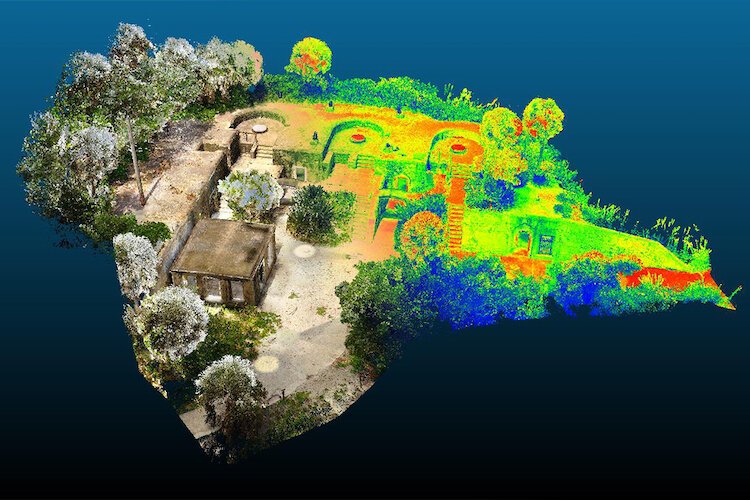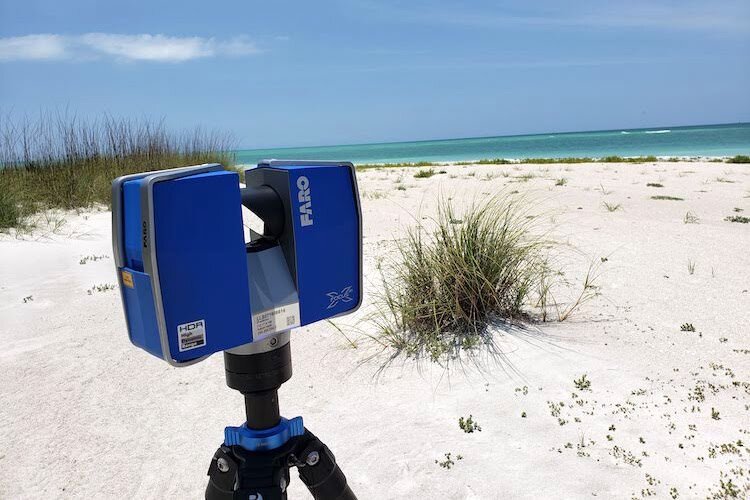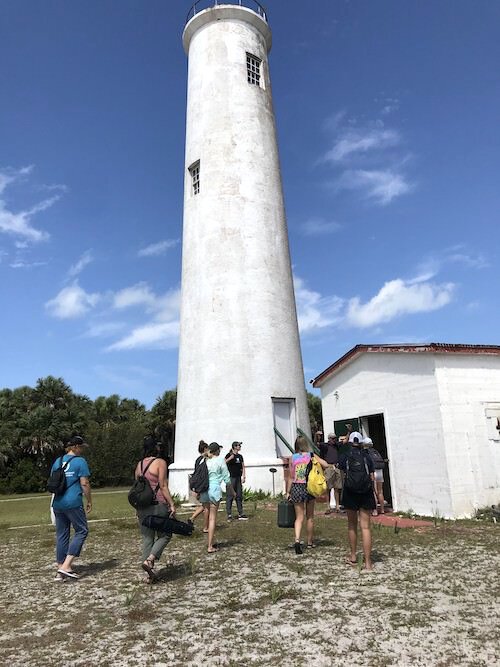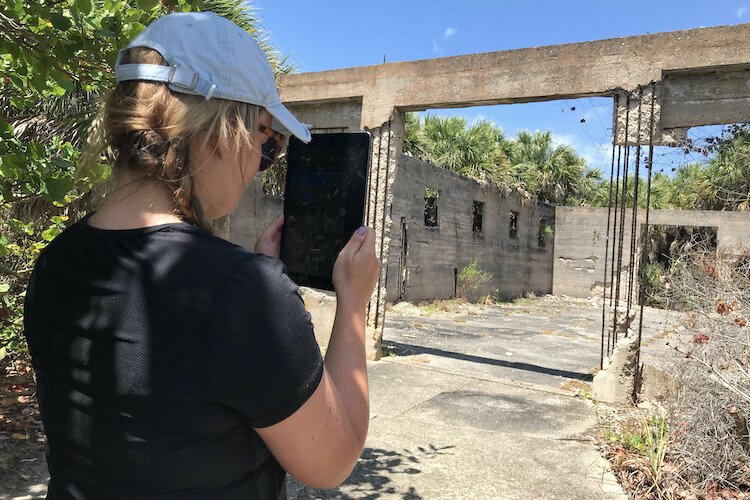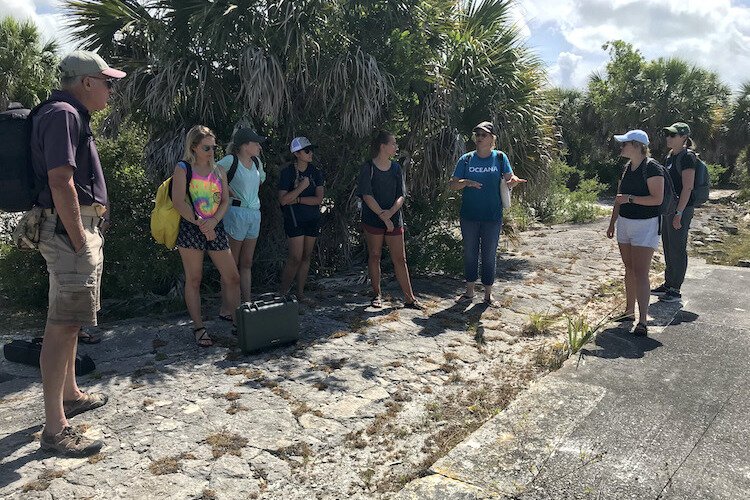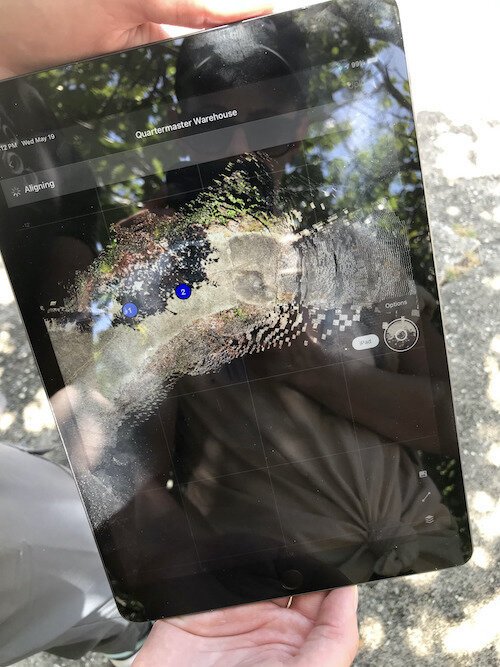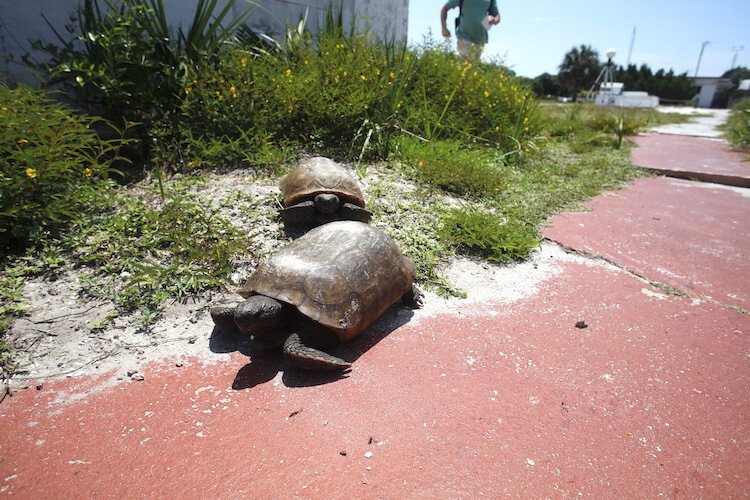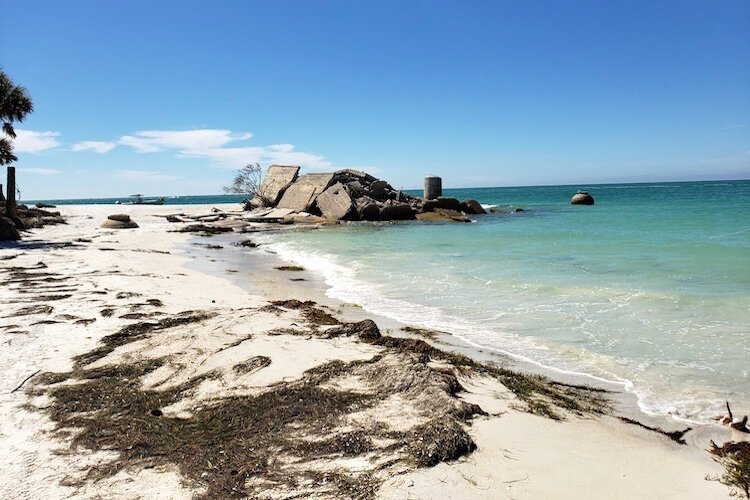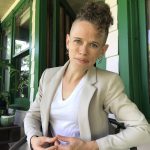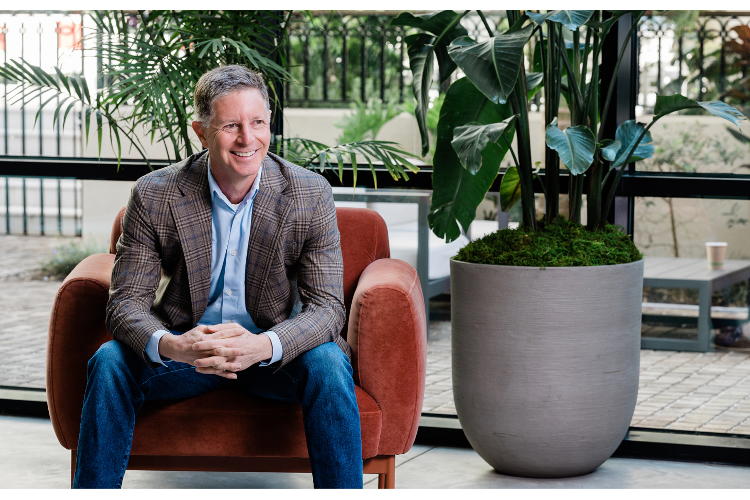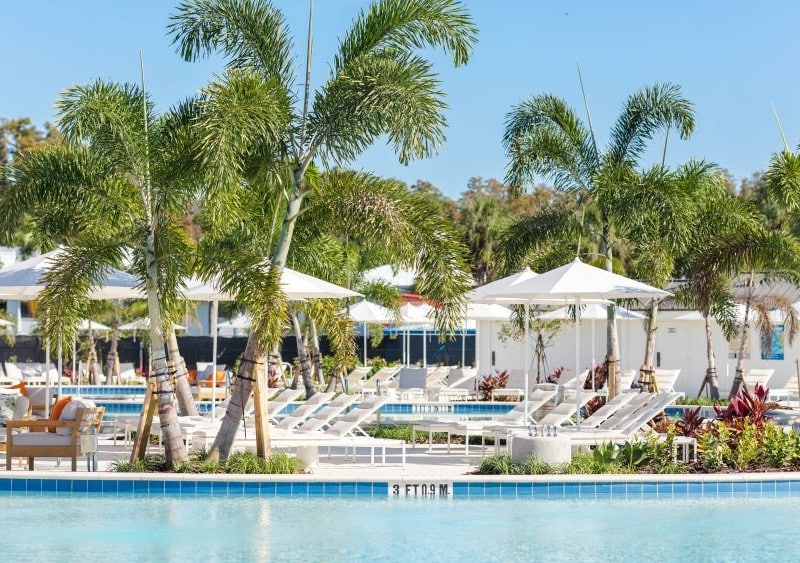USF Sustainable Tourism team reframes visitor experience to help save Egmont Key
USF Researcher Dr. Brooke Hansen aims to apply United Nations Sustainable Development Goals in the Egmont Key project to encourage a holistic shift toward sustainable tourism practices across Florida.
Part 2 of a 2-part series.
The USF project, “Egmont Key Project: Virtualization Technologies for Heritage at Risk and Sustainable Tourism in Tampa Bay” is now in its third year.
“The sustainable tourism paradigm can be summed up in a simple way. It’s the triple bottom line: It’s people, planet, and prosperity. I always put prosperity last, because yes, we value our tourist industry — it is our number one industry — but we have to put our planet, the environment, and people first … that means when we’re thinking about cultural heritage: who are all the people associated with this wonderful place we’re visiting?” says Dr. Brooke Hansen, Director of the Sustainable Tourism concentration at Patel College, who co-directs the program with USF Access 3D Lab Director, Dr. Laura Harrison.
Egmont holds a wealth of fascinating history, but Hansen chose to zero in specifically on the three-year Seminole internment era after connecting with the Seminole Tribe of Florida Tribal Historic Preservation Office (THPO) and learning the Seminoles’ stated desire to raise awareness.
“Part of learning history is to be there, to experience it, to think about it and to feel it. I can think of no better place to stop and reflect on all those things overlooked — like enslaved people taking refuge at Egmont Key, and conversely Native people being incarcerated there. We need to reflect on these things as we move toward, hopefully, a world that values diversity, inclusion, and multiple voices and perspectives,” says Hansen.
She aims to apply United Nations Sustainable Development Goals (SDGs) in the Egmont project to encourage a holistic shift toward sustainable tourism practices across the state.
“[SDGs are] basically systems thinking — a holistic framework to get us to understand that the challenges we face do not happen in isolation or silos. Everything from species extinction to pollution to hunger to poverty — all of these are interconnected problems. We have to see them that way and we have to come up with interconnected solutions,” Hansen says.
Masters students in the Sustainable Tourism program use Egmont Key as a “living learning laboratory,” she adds, to explore techniques that strengthen visitor engagement, establish more culturally-informed site interpretations, and encourage environmental stewardship. Students enrolled in the program are certified Heritage Monitoring Scouts with the Florida Public Archaeology Network (FPAN) who monitor at-risk sites like Egmont for climate impacts using a statewide, interactive, GPS mapping database.
Hansen’s team will encourage all Egmont visitors to join citizen science efforts by uploading photos to a soon-to-be-launched Facebook page. In addition to helping FPAN keep an eye on at-risk heritage sites, Hansen’s team hopes to crowdsource visitor-submitted Facebook photos as a way to keep an eye on and raise public awareness about Egmont’s vulnerable gopher tortoise population, nesting sea turtles and bird populations. The photos also help Heritage Monitoring Scouts know when they should return to Egmont to formally document new erosion.
“Let’s let them help us document that and collect data so we’re all scientists together — especially in our very vulnerable areas like Egmont Key. The more we engage visitors in activities like citizen science, the more they’re going to care about these places. We want them to be invested; we want them to invest in places they visit — and that happens through engagement,” says Hansen.
USF Access 3D Lab recreates Egmont Key sites in a virtual realm
Dr. Harrison joined the Egmont Key project in 2018 to oversee its virtualization efforts. She assists Hansen’s Sustainable Tourism students in using Access 3D Lab tech, including photogrammetry, 360-degree imaging and terrestrial LiDAR scanning, to document the island. Via these 3D scans, spaces like the Egmont Key lighthouse interior, which is typically closed to the public, become accessible — and explorable — in a virtual format. Educational “Matterport tags” offer historical context and environmental facts with the click of the button.
“A big piece of using these digital data sets is their capacity for visualization … you’re able to communicate ideas more effectively with public audiences. Sometimes there is a limitation where scientific research gets siloed within academia. One of the benefits of the digital age is that it allows us to communicate, visually, a lot of complex ideas,” Harrison says.
Because visible remnants of the camp where Seminoles were imprisoned no longer exist, Harrison’s team is focused on documenting Egmont’s environment and the heritage sites that do remain, such as ruins from the Spanish-American War era Fort Dade, which rum-runners and bootleggers later used as hideouts during the Prohibition 1920s — with sensitivity to the past that became obscured when those structures were built in the late 1800s.
“Egmont Key is unique in that it has a connection with a descendant community, the Seminole Tribe, so there are oral histories tied to a lot of intangible history. It’s also been an integral part of Tampa Bay in terms of the historical development of the region,” Harrison says.
“We have the measurements, we have the photos, we have the interpretation. Now, with digital technologies, we can bring all those things together — particularly in the case of something like an augmented and virtual reality, where you can have multimedia. You can have audio, you can have visual, you can have interactivity. Bringing all those things together creates a product that is quantitatively, qualitatively different from a traditional archaeological interpretation,” Harrison says.
The scans also offer a framework to strategize current preservation efforts, thanks to the millimeter accuracy the 3D point cloud allows, Harrison says.
“If a hurricane comes through, we can then go back and really pinpoint some specific areas, down to millimeter level, where damage has occured. It’s also the kind of product that can be shared with architects and engineers and conservators. These are CAD file formats … so we can work with these professionals to devise strategies using this three-dimensional data in order to develop real, data-driven disaster management and conservation plans,” she says.
Can Egmont Key exist in augmented reality for future generations?
Efforts to preserve Egmont include a mixture of short-term goals to raise public awareness, improve island infrastructure, and encourage better environmental stewardship coupled with longterm “what if…” brainstorming for the worst-case scenario: Egmont’s impending disappearance.
The effect COVID-19 had in urging a shift toward virtual-everything, coupled with ongoing efforts by USF’s Sustainable Tourism and Access 3D Lab to devise outside-the-box, eco-friendly ways for visitors to rethink their beach day on Egmont Key, may have presented an imperfect solution to one day preserve the island — in spite of the possibility climate events may swallow it within decades, or less.
The terrestrial laser datasets that Harrison, Hansen, and Patel College students are working to collect at Egmont Key lay the digital groundwork to recreate the island in a virtual realm, complete with click-and-drag exploration capabilities on a computer, tablet, or smartphone — or even compatibility with V.R. goggles that allow visitors to explore without physically setting foot on the island.
Harrison is currently using the scans to create a virtual museum of Egmont with educational multimedia tags, accessible to global audiences via web browser, as well as on an interactive touchscreen that Sustainable Tourism students are helping develop on-site at Egmont.
“I think [V.R.] is a great thing. When the island is long gone, we’ll be able to have it preserved in the virtual world. It’s not as heavy as being on the island itself, but being able to still virtually walk through everything and see the island still gives you a feel for things,” says Quenton Cypress, Community Engagement Manager for the Seminole Tribe of Florida.
“I think it helps — especially for folks that just don’t have the physical capabilities to get [to Egmont Key]. That ferry gets kind of rough, so unless you have a boat specifically made for folks who are in wheelchairs or need other accommodations — they can’t necessarily get out there,” he adds.
Options for preserving Seminole history virtually could eventually include creating avatars of Polly Parker’s living descendants sharing oral histories, or using 19th century surveys paired with 21st century 3D scans to develop a historically-accurate depiction of Egmont as the island would have appeared to ancestors who were taken there in the 1850s.
Historical archaeologist Dave Scheidecker, who has worked as Research Coordinator for the Seminole Tribe since 2015, notes that while there is much to consider before such interactive virtual visits to Egmont tracing Seminole history could become reality.
“Of course, we have to work through a lot, and talk to elders to see what is appropriate to do. You don’t want to turn a horrible part of people’s history into some weird form of entertainment,” he says.
Innovations in contemporary video gaming, as exemplified in the popular RPG, Assassins Creed, set a unique example for what’s technologically possible.
“I was able to take my character and walk around the Library of Alexandria as they recreated it — and have things to click on, to access, with info from archaeologists and historians. It’s completely removed from the standard video game stuff; it just serves as an educational tool. … We can’t get those places back, so this feels like the closest we can ever get. It captures the eye, it brings in a whole new understanding, and it brings in new people in to let them know that this history exists — and it’s fascinating,” Scheidecker says.
There’s plenty to consider about the future of Egmont Key — but as for the present moment: Cypress is eager to resume taking trips to the island with Seminole Tribe members — hopefully, he says, by the autumn months this year.
“It’s to remind them of who we are, where we came from, and the struggle and hardship we had to endure for us to be here today. It’s eye opening; it’s to let them know not to take anything for granted,” Cypress says.
“When you’re standing out there and you see the mainland in the distance, you kind of go back in time. You can see through our ancestors’ eyes.”
Read part 1 of this 2-part series: Seminole Tribe, USF Sustainable Tourism and 3D Access Lab reframe history at Egmont Key.
Looking to learn more? Don’t forget to read Egmont Key: A Seminole Story.

